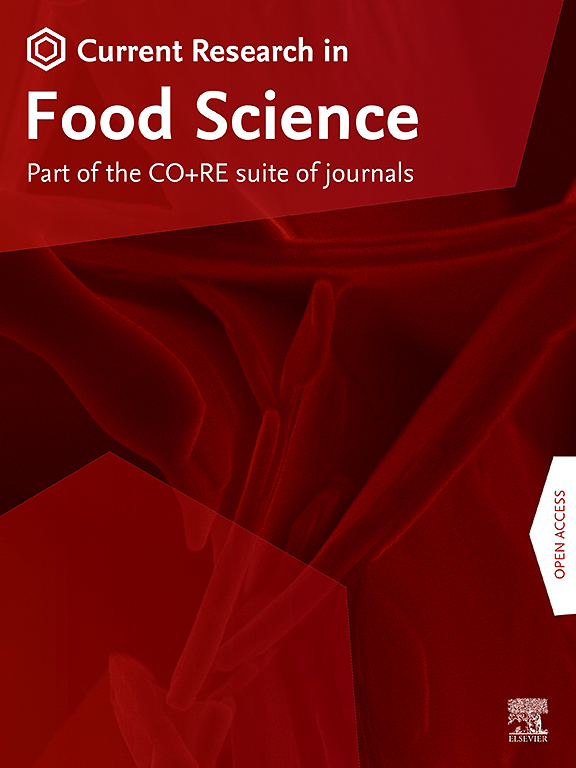Pre-harvest microbial Interventions: Impact on disease prevention, fermentation dynamics, and wine aroma in grape cultivation
IF 7
2区 农林科学
Q1 FOOD SCIENCE & TECHNOLOGY
引用次数: 0
Abstract
Microbial communities play a critical role in determining both fruit health and fermentation outcomes along the grape-to-wine continuum, yet their diversity dynamics within holistic production systems remain poorly understood. In this study, we investigated the impact of pre-harvest interventions—specifically the application of Saccharomyces cerevisiae NX2320, Trichoderma harzianum, and fludioxonil—on microbial community trajectories and wine aroma profiles during spontaneous fermentation. We demonstrated that all treatments significantly suppressed grape pathogens compared to untreated controls, while simultaneously restructuring the microbial communities in grape juice. This restructuring influenced fermentation outcomes, leading to distinct volatile compound profiles in the final wines. Notably, the S. cerevisiae-treated group exhibited rapid dominance of Saccharomyces (initial abundance: 89.96 %), which accelerated ethanol production and elevated key esters such as isobutyl acetate and 1-butanol-3-methyl-acetate. These changes collectively enhanced fruity notes in the wines. Furthermore, fungal diversity inversely correlated with fermentation progression, reinforcing the role of Saccharomyces in simplifying the microbial ecosystem. Crucially, early microbial modulation (pre-fermentation) proved to be a pivotal factor in determining the sensory attributes of the final wines, with the timing and type of intervention significantly influencing the variability of volatile compounds. These findings establish a causal relationship between agricultural microbiome management and oenological quality, offering actionable strategies for optimizing wine microbiota engineering and achieving desired aromatic characteristics.

采收前微生物干预:对葡萄栽培中疾病预防、发酵动力学和葡萄酒香气的影响
微生物群落在决定葡萄到葡萄酒连续体的果实健康和发酵结果方面发挥着关键作用,但它们在整体生产系统中的多样性动态仍然知之甚少。在这项研究中,我们研究了收获前的干预措施,特别是应用酿酒酵母NX2320、哈茨木霉和二恶英,对自发发酵过程中微生物群落轨迹和葡萄酒香气特征的影响。我们证明,与未处理的对照相比,所有处理都显著抑制了葡萄病原体,同时重组了葡萄汁中的微生物群落。这种重组影响了发酵结果,导致最终葡萄酒中不同的挥发性化合物特征。值得注意的是,酿酒酵母处理组表现出了酵母菌的快速优势(初始丰度:89.96%),这加速了乙醇的生产,提高了乙酸异丁酯和1-丁醇-3-甲基乙酸酯等关键酯的含量。这些变化共同增强了葡萄酒的果味。此外,真菌多样性与发酵进程呈负相关,强化了酵母菌在简化微生物生态系统中的作用。至关重要的是,早期微生物调节(预发酵)被证明是决定最终葡萄酒感官属性的关键因素,干预的时间和类型显著影响挥发性化合物的可变性。这些发现建立了农业微生物群管理与葡萄酒质量之间的因果关系,为优化葡萄酒微生物群工程和实现理想的芳香特性提供了可行的策略。
本文章由计算机程序翻译,如有差异,请以英文原文为准。
求助全文
约1分钟内获得全文
求助全文
来源期刊

Current Research in Food Science
Agricultural and Biological Sciences-Food Science
CiteScore
7.40
自引率
3.20%
发文量
232
审稿时长
84 days
期刊介绍:
Current Research in Food Science is an international peer-reviewed journal dedicated to advancing the breadth of knowledge in the field of food science. It serves as a platform for publishing original research articles and short communications that encompass a wide array of topics, including food chemistry, physics, microbiology, nutrition, nutraceuticals, process and package engineering, materials science, food sustainability, and food security. By covering these diverse areas, the journal aims to provide a comprehensive source of the latest scientific findings and technological advancements that are shaping the future of the food industry. The journal's scope is designed to address the multidisciplinary nature of food science, reflecting its commitment to promoting innovation and ensuring the safety and quality of the food supply.
 求助内容:
求助内容: 应助结果提醒方式:
应助结果提醒方式:


